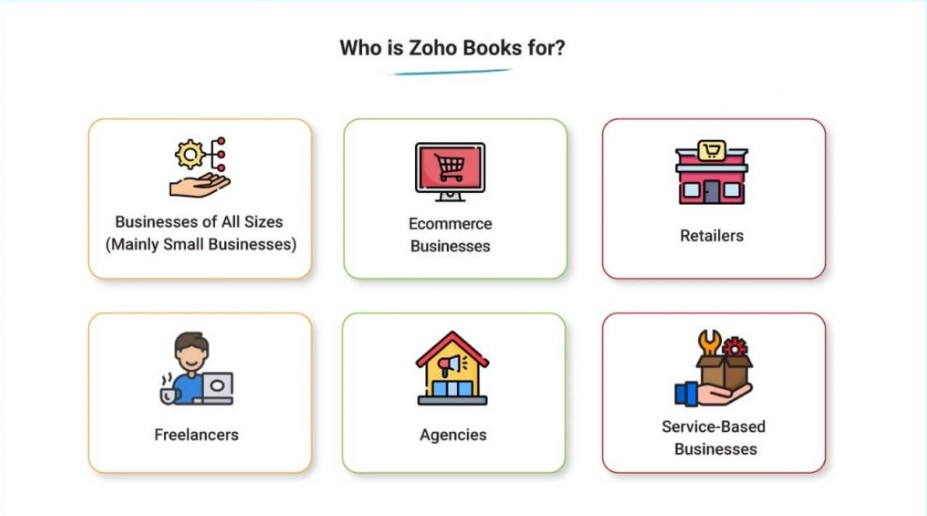Zoho Books is a robust cloud-based accounting solution that handles essential accounting tasks, inventory management, bank reconciliation, project tracking, GST compliance, and additional features. This online accounting software oversees your financial activities, streamlines business processes, and facilitates collaboration across various departments. Visit the Zoho Books login page.

Who is Zoho Books for?
Zoho Books serves as an excellent solution for businesses of any size seeking an accounting platform. It is particularly beneficial for small enterprises because of its cost-effectiveness and the option of a free plan. With features ranging from bank reconciliations to upholding invoicing best practices, it provides a thorough array of accounting tools for businesses.

How to Use Zoho Books: Step-by-Step
- Step 1: Register and Log In Visit the Zoho Books login page to set up an account. Select a plan that suits your business size and accounting requirements. If you are a newcomer, you can take advantage of the free trial to begin your journey.
- Step 2: Establish Your Organization Input your company information, including name, address, and tax details. Set your financial year and currency preferences. Personalize your invoice templates with your logo and branding.
- Step 3: Link Bank Accounts Connect your bank accounts to Zoho Books for smooth reconciliation. Utilize the auto-fetch feature to directly import transactions into the platform.
- Step 4: Create and Dispatch Invoices Go to the Invoices module and select “New Invoice.” Include client information, item descriptions, and payment terms. Send invoices directly from Zoho Books via email or download them as PDFs.
- Step 5: Monitor Expenses Utilize the Expenses module to log your business expenses. Classify expenses for improved tracking and reporting. Attach receipts for documentation and compliance purposes.
- Step 6: Handle Taxes Establish your tax rates, such as VAT or GST, according to your region. Leverage the tax reports feature to streamline filings and ensure adherence to local regulations.
- Step 7: Reconcile Bank Transactions Align your bank transactions with entries in Zoho Books for precise records. Employ the reconciliation feature to guarantee your financial statements are free of errors.
- Step 8: Produce Financial Reports Access comprehensive reports like profit and loss statements, balance sheets, and cash flow reports. Utilize the Dashboard to track key metrics and make informed decisions based on data.
- Step 9: Integrate with Other Zoho Applications Link Zoho Books with other Zoho applications, such as Zoho CRM and Zoho Payroll, for a cohesive business solution. Synchronize with third-party tools for enhanced functionalities.
Conclusion
This concludes our review of Zoho Books. Below is a summary of the main findings from our assessment.
Zoho Books serves as a robust accounting solution suitable for businesses of all sizes, particularly small and medium enterprises (SMEs). It offers advanced features comparable to many other accounting software options, but at a more affordable price point, making it an attractive choice for SMEs.
Moreover, the platform’s value is enhanced by its capabilities beyond just accounting, as highlighted in this review.
In addition to accounting, it includes project management and inventory management functionalities. These features contribute to its versatility, allowing businesses, especially those in ecommerce, to leverage the platform effectively.
With its automation capabilities, data analytics, and dedicated portals for clients and vendors, you can be confident that this platform will streamline and expedite the work of your accounting team.
Furthermore, it integrates seamlessly with all Zoho applications and a variety of third-party applications, including payment gateways and payroll management systems. This adds to its dynamic nature for businesses.
If this sounds like a platform that could benefit your business, consider trying it out by signing up for its free version today. You can later upgrade to a paid plan according to your requirements.

